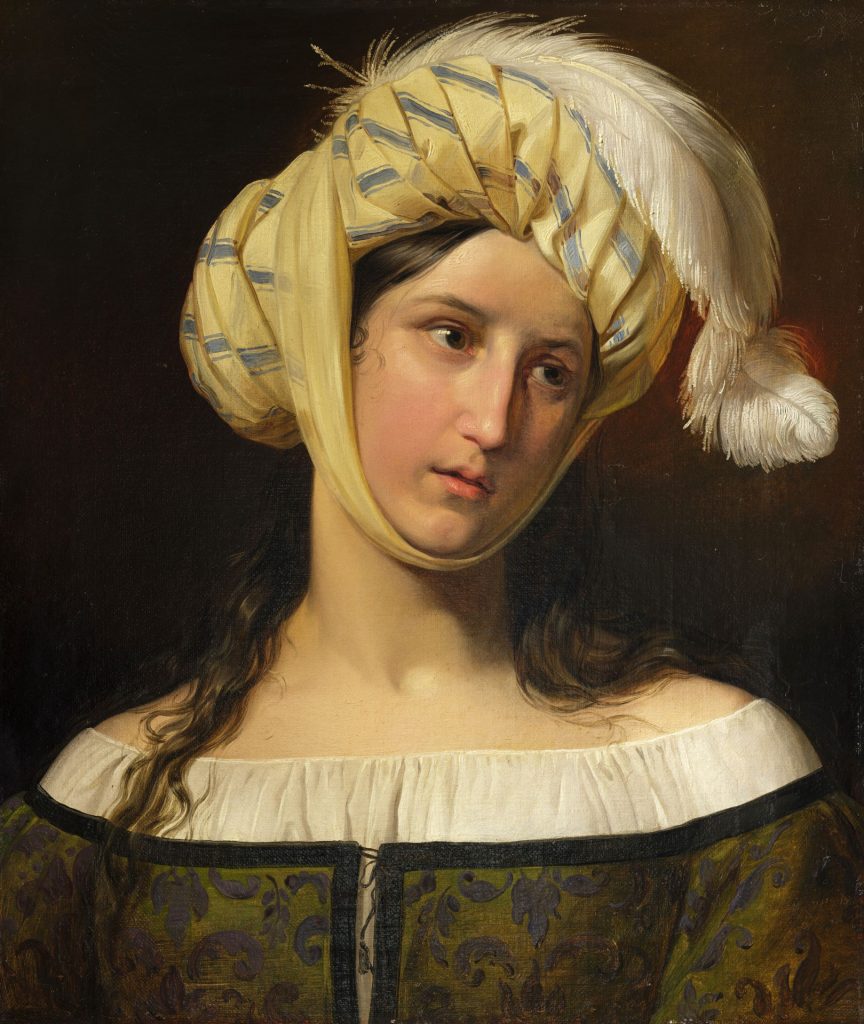
GIUSEPPE MOLTENI
(Affori 1800 – Milan 1867)
Rebecca
1835
Oil on canvas
51×44 cm
Museo Poldi Pezzoli, Milan

ARTWORK
Rebecca is a key character in Ivanhoe, a historical novel by Sir Walter Scott (1771–1832), set in the late 12th century. The young Jewish woman is in love with Ivanhoe, the protagonist, whose life she saves. However, she is forced to step aside to make way for Lady Rowena, the woman the hero loves. Charming, cultured, and passionate, Rebecca embodies the ideals and virtues of the Romantic sensibility.
Giuseppe Molteni, family portrait painter, restorer and friend of Gian Giacomo Poldi Pezzoli, chose to tackle a historical subject for the first time in his career just as Ivanhoe was at the peak of its success.
His work is characterised by the extreme care with which the setting and clothing are depicted, allowing him to create paintings of the highest quality and sophistication, and to rival the master of the Romantic school, Francesco Hayez, on the Lombard artistic scene.
The skill with which the woman is depicted is fully expressed in the details: the play of light on the turban fabric with its large ostrich feather, the soft strands of hair grazing her shoulders and the sad expression that hides the pain of love denied. Modelling his Rebecca on Scott’s description, Molteni’s portrait is not only a homage to the refined beauty of the young Jewish woman and her virtues, but a true celebration of the charm of one of Romantic literature’s most famous heroines.
BIOGRAPHY
Giuseppe Molteni, born in Affori (MI) on March 30, 1800, was forced to abandon his artistic studies at the Brera Academy due to financial problems and go instead to Bologna to learn the craft of restoration. Returning to Milan, he soon became one of the most sought-after restorers of the time, called upon not only by the Louvre and the British Museum but the most important Milanese and European collectors as well. He also dedicated himself to painting, introducing, in 1828, the genre of ‘setting portraits’, characterised by the meticulous and opulent rendering of the setting and costumes, which brought him extraordinary success, placing him in competition with Francesco Hayez.
In 1837 he began painting scenes from contemporary life that were very well received by both the public and critics.
In 1854, upon his appointment as curator of the Pinacoteca of the Brera Academy, he decided to stop painting. He died in Milan on 11 January 1867.
